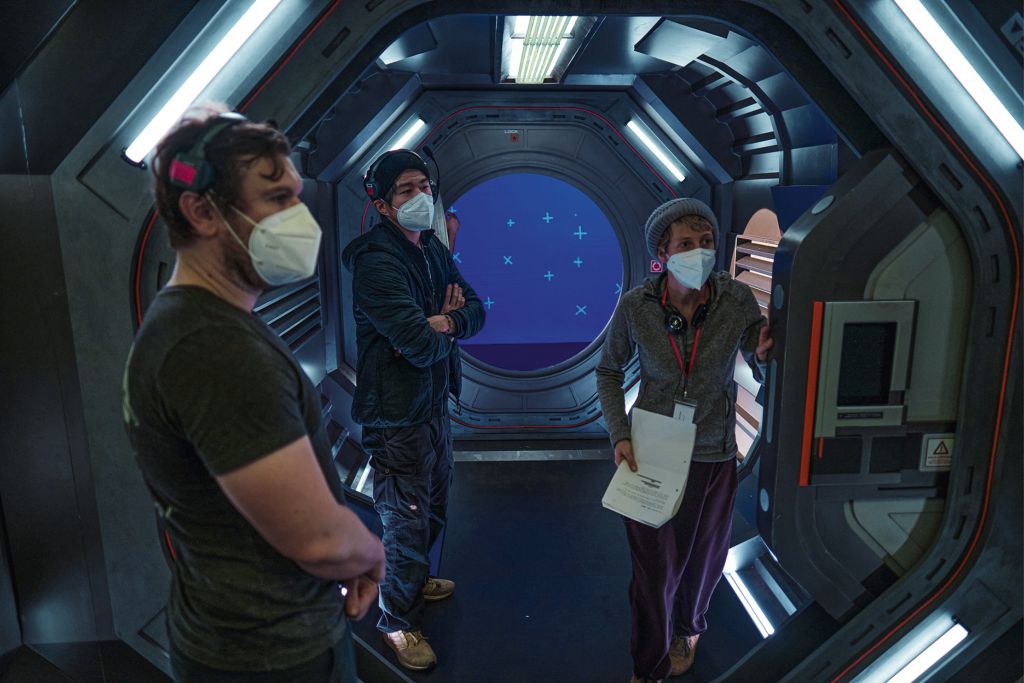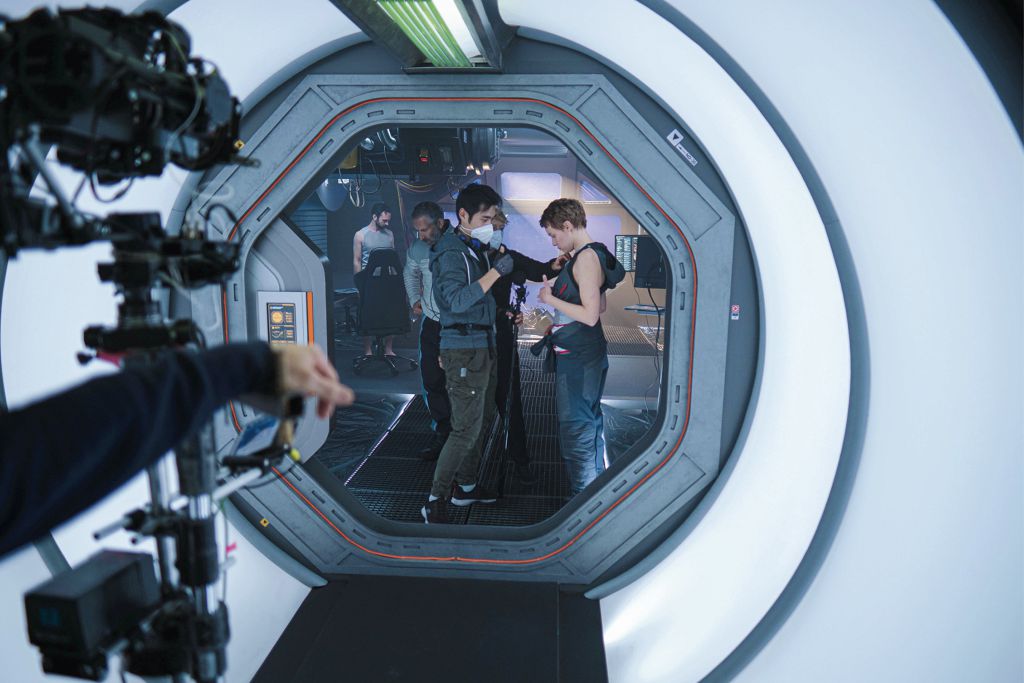“Austria-based filmmakers really do need to be more daring.”
Sci-Fi flicks with breathtaking visual effects and digital art: for a whole lot of us, the instant association here is with Hollywood. But the filmmakers behind Rubikon want to demonstrate that in the future, people should also think of Austria.
A large share of the know-how it will take to accomplish this comes from Film Academy Vienna—from the movie’s director and screenplay author Magdalena Lauritsch to her co-author Jessica Lind and editors Christoph Loidl and Anna Heuss. Rudolf Pototschnig, who’s responsible for sound design, and the team’s lead digital artists (involved above all in post-production) likewise study at the Film Academy. The film is being produced by Samsara Filmproduktion GmbH and Graf Filmproduktion GmbH.

As for its plot, the following would be a brief outline: we’re on the space station Rubikon, and the year is 2056. Unforeseen events back on Earth interrupt the research project being pursued by a corporate mercenary (Julia Franz Richter) and two scientists (George Blagden and Mark Ivanir). And in a highly charged way, the great themes of life proceed to come to the fore.
While Hollywood productions typically have nine-figure budgets to play with, Rubikon had to make do with a total of EUR 3 million. Making things possible on this budget involved not only more-than-full commitment and passion on everyone’s part but also the construction of a clever modular set by Johannes Mücke. Optimum planning of the visual effects likewise played an important role, as onset visual effects and compositing supervisor Benjamin Philippovich and his colleague Mariana Fabre, both students at the Film Academy, explain to mdw Magazine.
The two work for Arx Anima, which is the main studio responsible for this movie’s post-production visual effects. The head visual effects supervisor for the entire project is Prof. Franz Brandstätter of the Digital Arts – Compositing programme at Film Academy Vienna.
On Board Right from the Start
One thing is obvious: doing a science fiction film without digital artists would be unthinkable. It’s they who actually make a plot’s fantastical worlds visible in post-production, creating visual effects for scenes that were initially filmed before a green, blue, or black screen. Ideally, they’re on board right from the start—which means that during principal photography, they assume the role of onset visual effects supervisors who start right then and there with the coordination of those visual effects that will be applied later on.
“Being present onset is very important, partly in order to know what we’ll have to do later,” says Philippovich. On the set of Rubikon, he alternated as onset visual effects supervisor with his fellow student Florian Grünberger, providing valuable tips to help optimise post-production later on. What would be the best shot, the best camera angle? And how to best interact with the various elements of the set that would only be created afterwards on the computer? Mariana Fabre, the trio’s third member, spent this phase collected valuable metadata without which post-production wouldn’t have been possible: “I documented the exact camera positions, lighting conditions, and camera and lens specs while also taking photos. All that’s important in order to harmoniously integrate computer-generated content into the footage,” says Fabre.

The state-of-the-art technology that’s being used here can be seen not least in a “virtual production” experiment that’s fit to make even digital artists wax ecstatic: virtual production is a cutting-edge filming method involving in-camera VFX, where computer-linked cameras and the Unreal Engine software package allow production crew members to enter a virtual film set and film inside of it. They can choose between shot types themselves, making creative decisions much easier. A layperson might imagine this as something like a video game where you can move and act freely. What’s necessary is that the computer-generated worlds already be finished when filming begins.
The advantage in post-production is that footage produced in this way can be handled much more efficiently. And while it does still need to be worked over, the metadata from the set is already there.
Time for Post-Production
Principal photography for Rubikon wrapped on 27 December 2020. But there’s still lots left to do before it hits the cinema screens this autumn. With the clapperboard’s final clap, Benjamin Philippovich morphed into the production’s compositing supervisor—whose job is to serve as the central node in the post-production process. “Compositing” denotes the integration of two separately filmed or generated elements in order to form a single picture—one example of which would be the addition of the view of outer space visible through the windows of the space station Rubikon.
Even before the edited footage arrives, Philippovich is busy coordinating the various team members’ work together. And in the case of shots created entirely on the computer, the CG department (CG = computer-generated imagery) can already get started beforehand. In Rubikon, these shots include views of the space station’s exterior and the view of the Earth from space. The CG and onset material get joined once the production department has delivered the edited film footage.
The deadline is an ambitious one—and from April to the end of September, around 10 people will be working to meet it. Here, Philippovich mentions one of the important points on their to-do list: “Computer-generated images need to be made a bit more ‘raw’ so that the fit into the filmed material.” And in doing so, he adds, the most crucial thing is to reconstruct the onset lighting conditions.
VFX in Austria
Rubikon is set to be not only an exciting science fiction movie but also a poster child of sorts for digital art and compositing in Austria. “To me, this film is something special because it’s the first time that such a huge science fiction production has been done in Austria,” explains Philippovich: “It’s also the first time I’ll have served as compositing supervisor. Which is a ton of responsibility, but also really fascinating because you’re so much more involved in the entire project.”
Thus far, only a very small number of digital artists have been able to make a living working exclusively on Austrian productions. Many graduates follow their excellent training at Film Academy Vienna with work on international projects in the industry’s hotspots—in Canada, Australia, Great Britain, or Germany. But Rubikon is intended to show just what all is possible in Austria: “Austria-based filmmakers just really do need to be more daring when it comes to producing films with visual effects,” Philippovich concludes.

